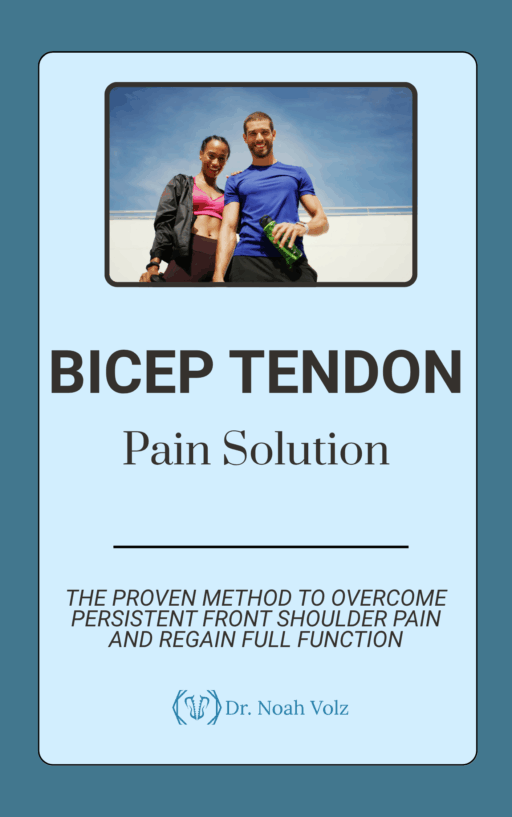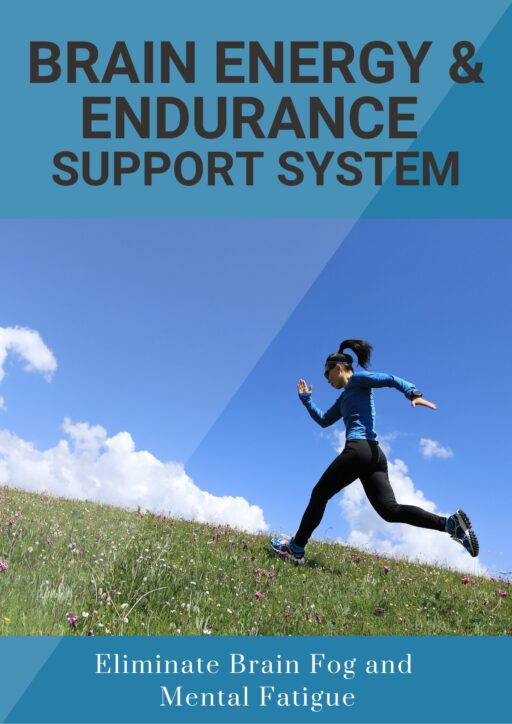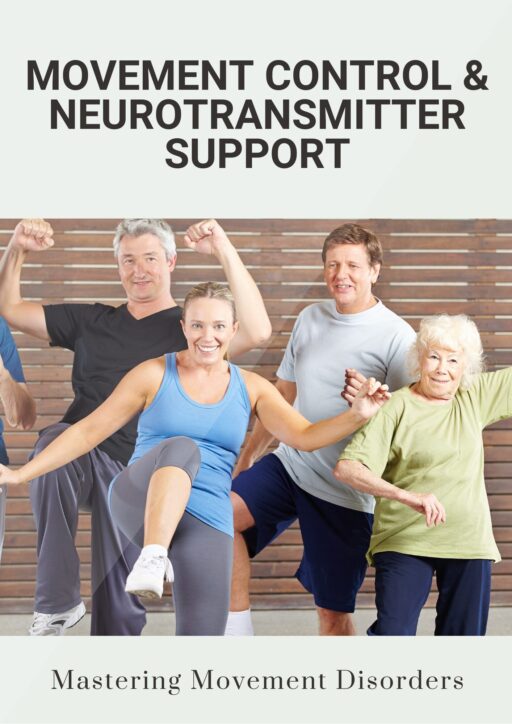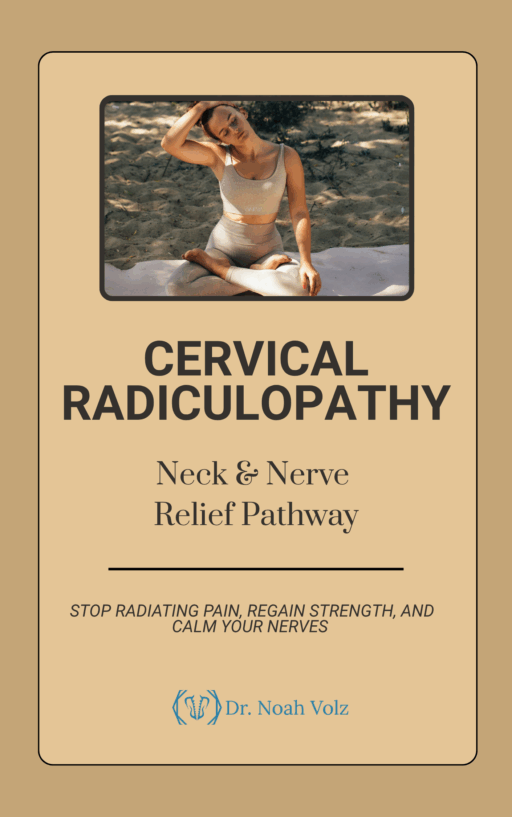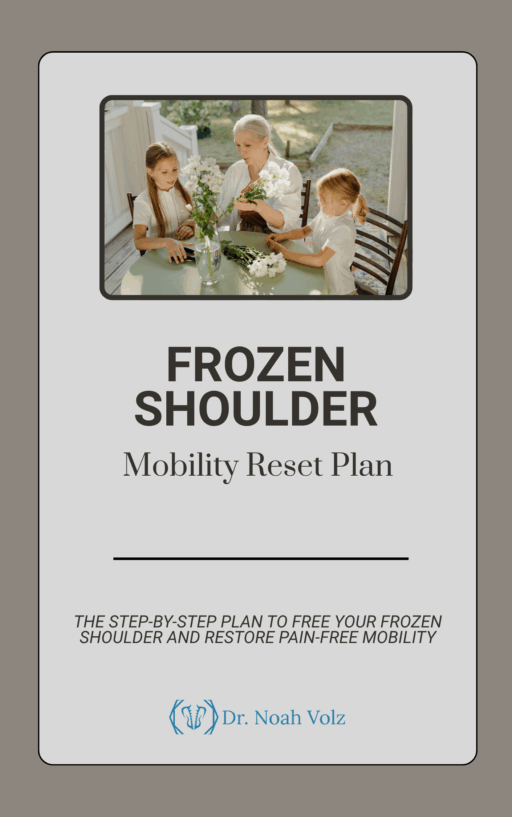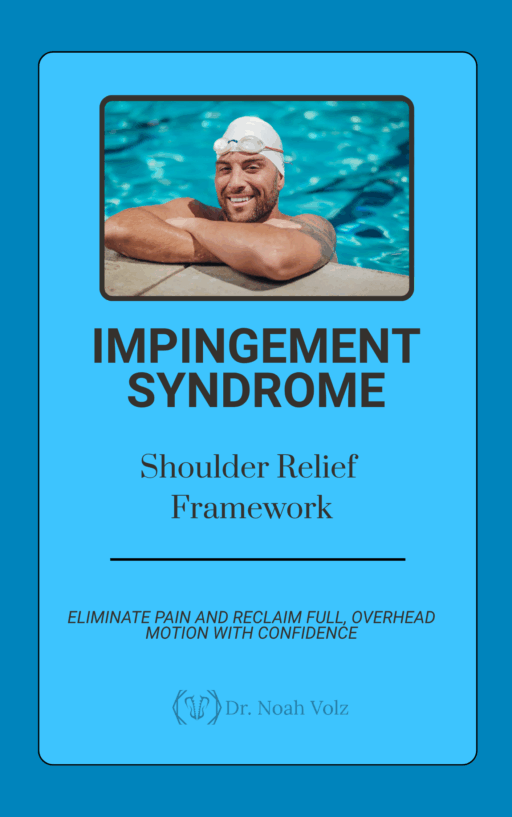Most people who come into the clinic describe their pain as stemming from arthritis. Arthritis can cause pain and this article will explain why and how that can happen. Neck spondylosis is the technical name for age-related spinal degenerative changes. These degenerative changes usually result in arthritis and can cause nerve root irritation resulting in shooting pain into one or both arms. It is considered an age-related disorder because it affects half of the population by age 40 and up to 85% of the population by age 60 (3). It is more common for men to be affected than women (4). The most commonly involved spinal segments are C5/6 and C6/7 (5).
Causes of neck arthritis
The degenerative changes in the neck begin with changes in the intervertebral disc, this is called degenerative disc disease (DDD). As the center of the disc dehydrates, it flattens and the outer fibrous layer of the disc buckles outward causing a stress reaction along the ends of the vertebrae that sandwiches the disc.
The loss of strength in the disc and the resulting stress of the vertebrae causes excess mobility. In an effort to stabilize the resultant hypermobility, the body begins to produce extra bone at the front of the spinal canal.
In addition to degeneration in the disc the loss of disc height also leads to disproportionate loading of the facet joints resulting in degenerative change, this is called degenerative joint disease (DJD). These changes can lead to extra bone growth that can pinch the nerve. Long term degeneration can lead to a calcification of the ligaments that span the front and back of the spinal cord (1,2).
Common symptoms of neck arthritis
The most common indication that you may have neck spondylosis is neck stiffness. The stiffness is usually accompanied by pain, pins and needles, or numbness in the arm (99%), neck (80%), shoulder or shoulder blade (52%) (6). In 10-33% of cases there is pain at the base of the skull and headaches (6,7). Vertigo and left-sided chest pain are also possible. In the worst cases there is weakness in the arms and loss of muscle tone. Unless something is done the degeneration will get worse. It begins with pain along the spine, progresses to pain down the arm, and then pain down both arms.
How to evaluate neck arthritis
The stiffness in the neck results in a loss of range of motion and pain. When you go to see your chiropractor they will run some orthopedic tests on you, moving your head in positions and pushing down, having you place the involved arm on your head, or doing traction on your neck. Based on the findings you could be diagnosed with radiculitis or cervical radiculopathy (8). A more serious complication of degeneration are changes in changes in gait, frequent falls, bowel or bladder dysfunction or loss of hand dexterity (9).
Another serious complication that can indicate there is some pressure on the spinal cord is hyperreflexia, ankle clonus, babinski sign, hoffman’s sign or tucking your chin the chest producing electric shock sensation (5).
X-rays can confirm spondylosis. MRI is the accepted imaging standard for the diagnosis of spinal stenosis- which is suspected when the central canal nears 13mm and is highly likely when the canal dimension is less than 10mm (9).
Upper cervical chiropractic for neck arthritis
The treatment begins by reducing inflammation, reducing compression on the nerves, and restoring normal biomechanics. Once inflammation has been reduced traction can provide relief in 81% of patients (10). Home traction may be performed for 15-20 minutes, 2-3 times per day. Myofascial release and instrument assisted soft tissue therapy (IASTM) can be used on sites of chronic cervical and shoulder girdle involvement.
In older adults adjustments of the neck results in greater improvements in pain and disability when compared to a home exercise program alone. This results in 47% lower costs compared to supervised rehabilitation. (22) It is common for upper cervical adjustments to help immediately with degenerative joint disease. (20) Slow, gentle, painless, repetitive low amplitude nerve mobilization techniques in the direction of neural tension can also be used to reduce pain and restore neural plasticity (12).
Treatment for Neck Arthritis
Home exercises for the management of spondylosis should target the levator, trapezius and cervical rotators. Cervical retractions are thought to promote cervical root decompression and reduce radicular pain (18). In addition, improving the posture through a neck support pillow (13). The neck will be aggravated by prolonged positions like looking up or down while reading (19).
Oral steroid dose packs can be used. Medial branch blocks or facet blocks may provide significant relief (15). Epidural steroid injections may help patients with radicular symptoms (16). In advanced cases, surgical decompression may be necessary. All of these options should be used as a last resort.
Exercises to help heal neck spondylosis
Conclusion
Neck spondylosis can be healed and this article gives you some suggestions on what to look for to determine you have degenerative joint diease and what to do about it. I hope that this information helps you. If you have any additional questions please leave a comment. In addition to this article you can also read the Guide to Chronic Neck Pain eBook.
References
1. McCormack BM, Weinstein PR. Cervical spondylosis. An update. West J Med. Jul-Aug 1996;165(1-2):43-51.
2. Hoff JT, Wilson CB. The pathophysiology of cervical spondylotic radiculopathy and myelopathy. Clin Neurosurg. 1977;24:474-87.
3. Matsumoto M, Fujimura Y, Suzuki N, Nishi Y, Nakamura M, Yabe Y, Shiga H. MRI of cervical intervertebral discs in asymptomatic subjects. J Bone Joint Surg Br. 1998;80:19-24.
4. Holt S, Yates PO. Cervical spondylosis and nerve root lesions. Incidence at routine necropsy. J Bone Joint Surg Br. Aug 1966;48(3):407-23.
5. Wheeless’ Textbook of Orthopaedics. wheelessonline.com
6. Henderson CM, Hennessy RG, Shuey HM Jr, Shackelford EG. Posterior-lateral foraminotomy as an exclusive operative technique for cervical radiculopathy: a review of 846 consecutively operated cases. Neurosurgery. 1983;13:504-12.
7. Heller JG. The syndromes of degenerative cervical disease. Orthop Clin North Am. Jul 1992;23(3):381-94.
8. Viikari-Juntura E., Porras M., Laasonen E. M. Validity of clinical tests in the diagnosis of root compression in cervical disc disease. Spine. 1989;14:253–257.
9. Levine MJ, Albert TJ, Smith MD. Cervical radiculopathy: diagnosis and nonoperative management. J Am Acad Orthop Surg. 1996;4(6):305–316.
10. Swezey RL, Swezey AM, Warner K. Efficacy of home cervical traction therapy. Am J Phys Med Rehabil. Jan-Feb 1999;78(1):30-2.
11. Heffner S. The McKenzie protocol in cervical spine rehabilitation. In: Murphy DR, editor. Conservative management of cervical spine syndromes. New York 7 McGraw-Hill; 2000. p. 641-62.
12. Butler DS. The sensitive nervous system. Adelaide (Australia)7 Noigroup Publications; 2000
13. Redford JB, Patel A. Orthotic devices in the management of
spinal disorders. Spine: State of the Art Reviews 1995;9(3):
673-88
14. Albert TJ, Murrell SE. Surgical management of cervical radiculopathy. J Am Acad Orthop Surg. 1999;7(6):368–376.
15. Manchikanti L, Damron K, Cash K, Manchukonda R, Pampati V. Therapeutic cervical Medial Branch Blocks in managing chronic neck pain: a preliminary report of a randomized, double-blind, controlled trial: clinical trial NCT0033272. Pain Physician. 2006 Oct;9(4):333-46.
16. Rhee JM, Yoon T, Riew KD. Cervical radiculopathy. J Am Acad Orthop Surg. 2007;15(8):486–494.
17. L. Anderberg, M. Annertz, U. Rydholm et al. Selective diagnostic nerve root block for the evaluation of radicular pain in the multilevel degenerated cervical spine Eur Spine J, 15 (2006), pp. 794–801
18. Abdulwahab SS, Sabbahi M. Neck Retractions, Cervical Root Decompression, and Radicular Pain. Journal of Orthopaedic & Sports Physical Therapy 2000;30(1):4-12
19. Lau E, Sham A, Wong K. The prevalence of and risk fac- tors for neck pain in Hong Kong. Chin I Public Health Med. 1996;18:396-399.
20. Zhu L, et al. Does cervical spine manipulation reduce pain in people with degenerative cervical radiculopathy? A systematic review of the evidence, and a meta-analysis. Clin Rehabil. 2016 Feb;30(2):145-55.
21. Leininger B, et al. Cost-effectiveness of spinal manipulative therapy, supervised exercise, and home exercise for older adults with chronic neck pain. Spine J. 2016 Jun 23.
22. Leininger B, et al. Cost-effectiveness of spinal manipulative therapy, supervised exercise, and home exercise for older adults with chronic neck pain. Spine J. 2016 Nov;16(11):1292-1304
-

Bicep Tendon Pain Solution
$50.00 -

Brain Detoxification & Recovery System
$50.00 -

Brain Energy and Endurance Support System
$50.00 -

Brain-Based Movement and Motor Control Training
$50.00 -

Centralized Low Back Pain
$50.00 -

Cervical Radiculopathy: Neck and Nerve Relief Pathway
$50.00 -

Complex Low Back Pain
$50.00 -

Complex Radiating Low Back Pain
$50.00 -

Cross-Pattern Low Back Pain
$50.00 -

Frozen Shoulder Mobility Reset Plan
$50.00 -

Impingement Syndrome: Shoulder Relief Framework
$50.00 -

Mastering Brain Senses: Rebuild Your Hearing, Vision, and Body Awareness
$50.00


